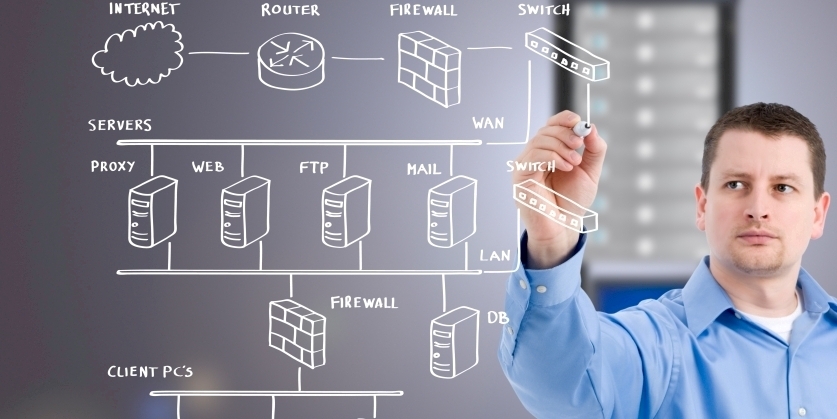CCNA (Cisco Certified Network Administrator)
Beginners/Freshers can learners basic knowledge of Network including configuration of Router & switch, Knowledge of basic security threats, understanding redundant topologies, troubleshooting common network issues, configuration of static and dynamic routing and make a career in Netowkring & Security
Module 1:
Operation of IP Data Networks
Recognize the purpose and functions of various network devices such as routers, switches, bridges and hubsSelect the components required to meet a given network specification
Identify common applications and their impact on the network
Describe the purpose and basic operation of the protocols in the OSI and TCP/IP models
Predict the data flow between two hosts across a network
Identify the appropriate media, cables, ports, and connectors to connect Cisco network devices to other network devices and hosts in a LAN
Module 2:
LAN Switching Technologies
Determine the technology and media access control method for Ethernet networksIdentify basic switching concepts and the operation of Cisco switches
Collision Domains and Broadcast Domains
Ways to switch store, Forward and Cut Through and CAM Table
Configure and verify initial switch configuration including remote access management
hostname ,Management IP address,Local username and Password, Console and VTY Logins
Verify network status and switch operation using basic utilities such as PING,TELNET.SSH
Describe how VLANs create logically separate networks and the need for routing between them
Explain network segmentation and basic traffic management concepts
Configure and verify VLANs ,Trunks,DTP ,Auto Negotiation
Identify enhanced switching technologies PVST and RSTP
Etherchannels(Link Aggregation ) ,PAGP and LACP
Module 3:
IP Addressing (IPv4/IPv6)
Describe the operation and necessity of using private and public IP addresses for IPv4 addressingIdentify the appropriate IPv6 addressing scheme to satisfy addressing requirements in a LAN/WAN environment
Identify the appropriate IPv4 addressing scheme using VLSM and summarization to satisfy addressing requirements in a LAN/WAN environment
Describe the technological requirements for running IPv6 in conjunction with IPv4
Describe IPv6 addresses, Global Unicast, Link Local, Multicast, EUI-64and Auto Configuration
Module 4:
IP Routing Technologies
Describe basic routing concepts, Packet Forwarding, Router Lookup ProcessProcess Switching/Fast Switching/CEF
Configure and verify utilizing the CLI to set basic Router configuration
Describe basic routing concepts, Packet Forwarding, Router Lookup Process
Verify router configuration and network connectivity using PING, TRACEROUTE, TELNET,SSH
Configure and verify routing configuration for a static or default route given specific routing requirements
Static vs. dynamic Routing
Admin distance, SplitHorizon, Metric
Configure and verify OSPF,Benefit of Multiple area
Understand LSA types and purpose
Configure and verify interVLAN routing (Router on a stick)
Manage Cisco IOS Files, Boot Preferences, Licensingn
Configure and verify EIGRP,Feasible Distance/Feasible Successors/Administrative distance
Feasibility condition and Metric Composition
Module 5:
IP Services
Configure and verify DHCP (IOS Router)Describe the types, features, and applications of ACLs
standard (editing and sequence numbers) and Extended
Identify the basic operation of NAT, Purpose, Pool, Static, Overloading
Configure and verify NTP as a client
Recognize High availability VRRP, HSRP, GLBP
Configure and verify syslog
Module 6:
Network Device Security
Configure and verify network device security featuresDevice password security,Enable secret vs. enable, Transport ,Disable Telnet
Configure and verify Switch Port Security
Sticky MAC,MAC address limitation, Violation Modes, Err disable Recovery
Configure and verify ACLs to filter network traffic
Configure and verify ACLs to limit telnet and SSH access to the rout
Module 7:
Troubleshooting
Troubleshoot and correct common problems associated with IP addressing and host configurationsTroubleshoot and resolve VLAN problems
Troubleshoot and resolve trunking problems on Cisco switches
CRC ,Runts,Giants,droppedPackets,Late Collisions
Monitor NetFlow statistics
TS EtherChannel problems
WAN Technologies


